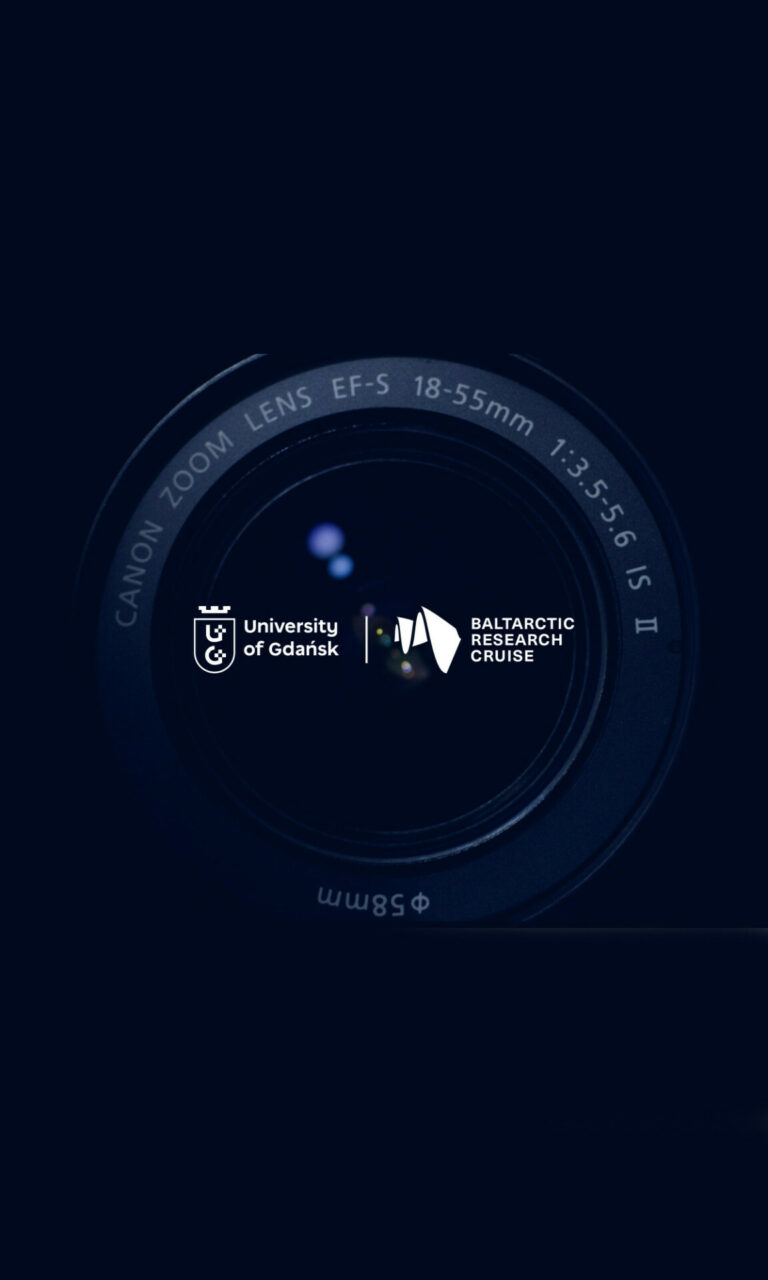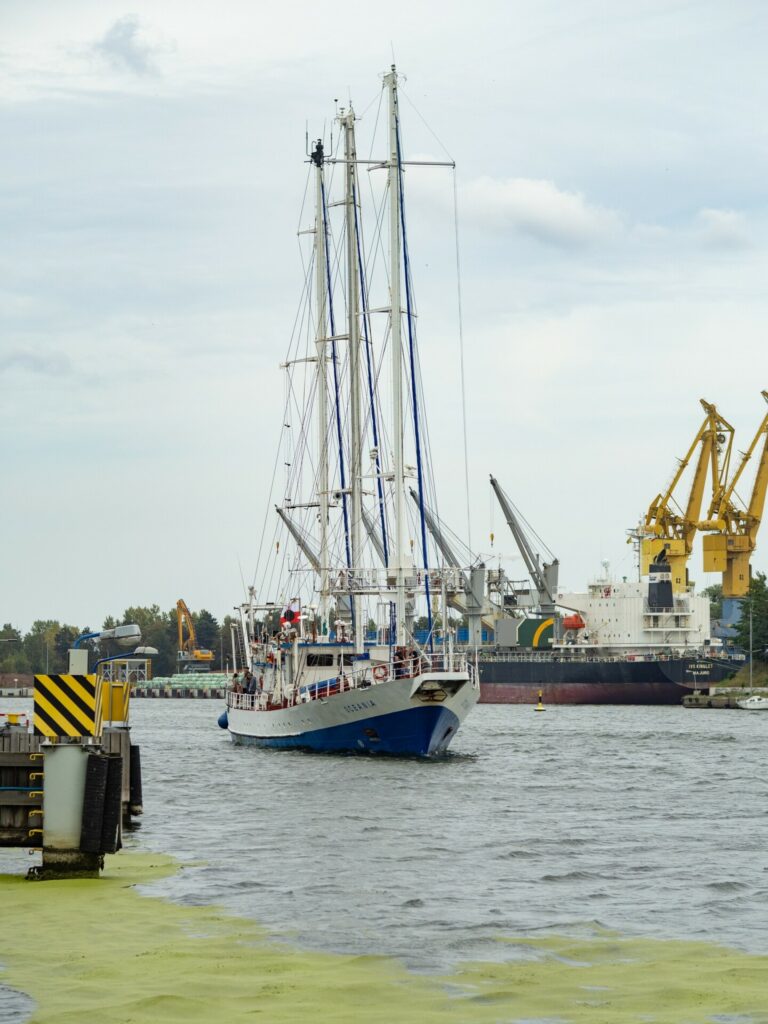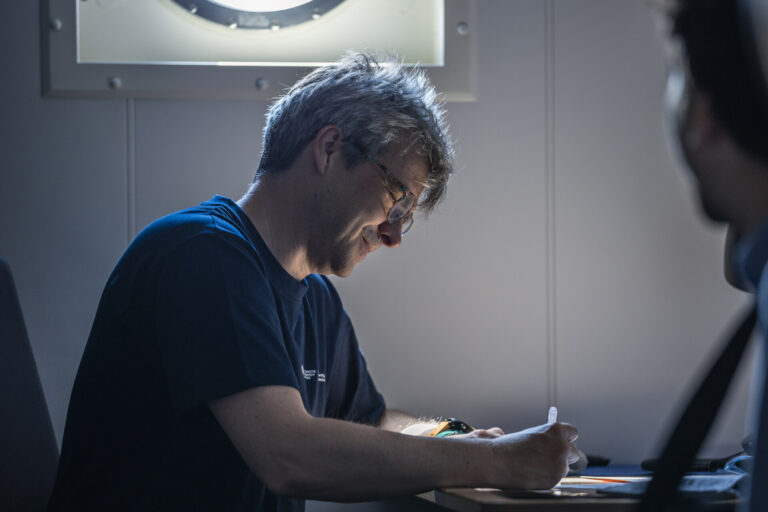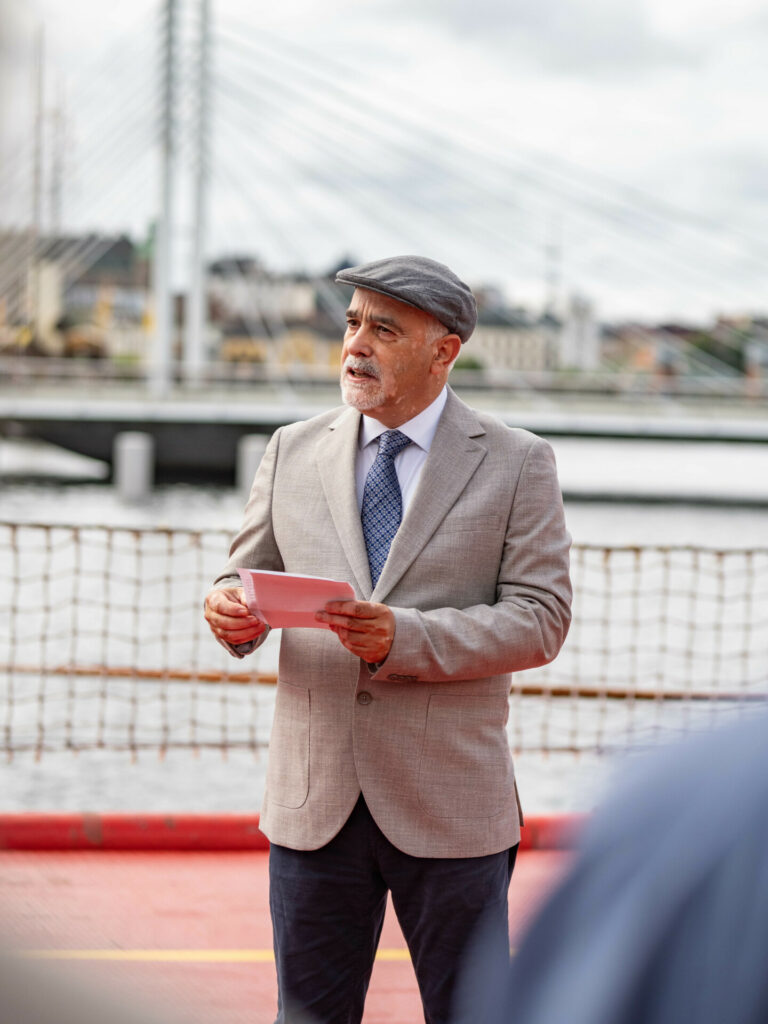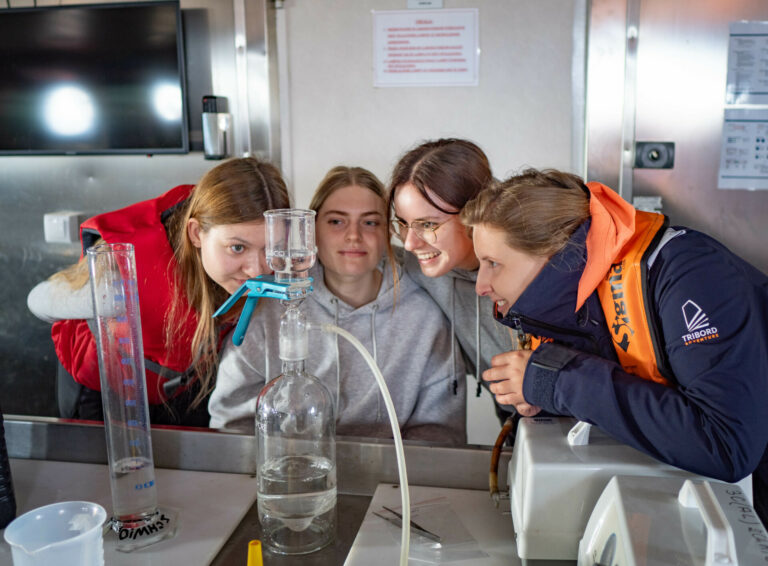Julia Więcławska
I think the most memorable thing for me were the jellyfish, which are the subject of my research. I’ve seen both Cyanea capillata and Aurelia aurita. They are definitely much more impressive in real life and there were a lot of them, so I was really happy with my observations. We learnt a lot about how to use the research equipment on the ship. I’m really grateful to our research team leader Ryszard Kuczyński, with him on board we knew that it’s okey to make mistakes, because that’s how you learn new things. I would love to go on another cruise like this, maybe to Hawaii, because the supervisor for my bachelor’s thesis, Maciej Mańko, PhD, brought back a lot of interesting zooplankton samples from there.
Also, I thought you only get seasick once, when you get on the ship, not every time there is a big wave!
Karolina Banasiak
I was surprised to see how diverse the zooplankton were in the sea . Every time we put out a net it was full of life. It’s really different to see these organisms alive. In our classes we usually look at dead ones. Here they were alive, which was amazing, but unfortunately it also meant that we had to sacrifice them to create samples. The most intriguing creatures I’ve seen on this trip were the comb jellies (Ctenophora). It was really fun to see these combs move. I would love to go on another cruise like this, maybe to Antarctica…
Emilia Neuman
I really enjoyed the team-building aspect of the sampling process. It’s a lot of work, so you have to make sure everyone does their part. There was a big difference between our teamwork on the first and second day. Once we got the hang of it, we completed our tasks twice as fast. Now I know that it’s better to assign roles from the start, than to let everyone do everything at once.
Adam Krzysztofik
Thanks to this cruise, I was able to see how I would react to working in harsh weather conditions while doing physical work. The hardest thing for me was to stand in the cold, with the wind blowing, for 40 or 50 minutes at a time, collecting micro-layer. Also getting up at 4am to turn on the aerosol impactor. But it’s still worth it, especially when you get to meet so many interesting people from abroad or even students from your faculty that you didn’t know before.
Roksana Malec
Before this cruise, I’d never seen how a research vessel works. Now I know the whole process of collecting samples – from the sea to the lab. It’s a lot of work, sometimes you have to get up very early in the morning because that’s when the ship arrives at the research station. But it’s also really eye-opening to talk to people who are researching something completely different to you. I was really interested in the zooplankton that Julia and Karolina were collecting.
Helena Krzychała
I learnt a lot about the planning needed to conduct a research cruise and collect samples. While working, we encountered some problems that could’ve been avoided with a bit more preparation, like packing additional materials for processing the samples. It’s really important to cooperate and share the tasks equally, especially when the weather conditions are rough and the waves are high, which can really slow down the work.

